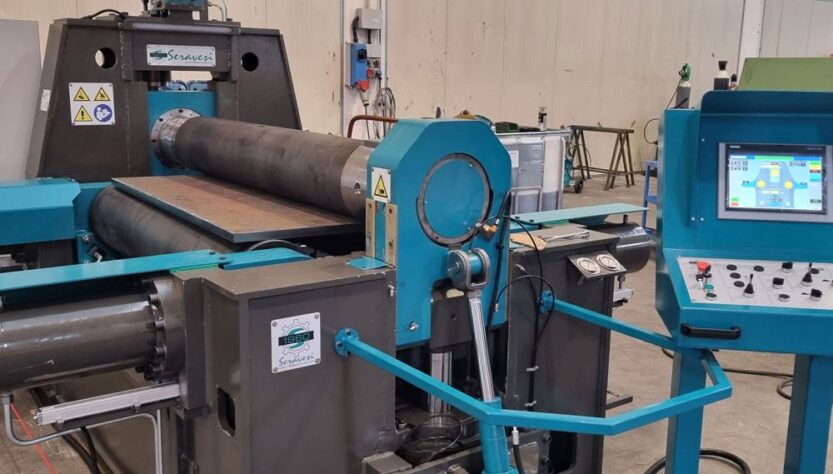The plate roll is an essential machine in numerous industrial sectors, especially in metalworking. Used for bending and shaping sheet metal, it is an indispensable resource for companies operating in metal carpentry, tank production, piping, and cylindrical structures.
In this article, we will explore everything you need to know about this tool, from the most common types to tips on maintenance and operational management.
- Types of plate roll and their characteristics
- How to use a plate roll correctly
- Plate roll: practical applications in different sectors
- Preventive maintenance of the plate roll
- What to evaluate before purchasing a plate roll
1. Types of plate roll and their characteristics
There are various types of plate roll, each designed to meet specific production needs. The 2-roll plate roll is simple and compact, ideal for working with thin sheets. The 3-roll version, available in symmetrical or asymmetrical configuration, is the most versatile and allows for controlled, precise bending.
The 4-roll plate roll offers higher precision and speed, making it ideal for automated jobs and large-scale production. Lastly, the CNC plate roll provides advanced automation capabilities, thanks to computer numerical control that enables programming of complex and repetitive bending sequences.
Choosing the right plate roll depends on the material thickness, the minimum required diameter, and the volume of parts to be produced.
2. How to use a plate roll correctly
Proper use of the plate roll is essential for achieving precise results, minimizing waste, and preserving the machine over time. First, ensure the sheet surface is clean and free of impurities. Then correctly position the material by adjusting the upper and lower rolls according to the desired curvature.
The working speed must also match the thickness and type of metal being used. Once the operation is complete, verify the final result against the required specifications. For CNC plate rolls, it is crucial to correctly set the software parameters to automate the bending sequence reliably and consistently.
3. Plate roll: practical applications in different sectors
Thanks to its ability to form metal into curved or cylindrical shapes, the plate roll is used in many industrial sectors. In heavy carpentry, it is used to build load-bearing structures, large-diameter pipes, tanks, and silos. In the shipbuilding industry, plate rolls shape metal sheets for hulls and curved structural components.
In the automotive field, plate rolls help produce shaped parts and aesthetic components with precise curves. In the energy and industrial plant sectors, they are essential for manufacturing boilers, pressure systems, and pipelines. Their adaptability to materials such as stainless steel, aluminum, and copper makes them extremely versatile machines.
4. Preventive maintenance of the plate roll
To ensure the longevity of a plate roll and maintain high-quality output, regular preventive maintenance is a must. It’s important to lubricate bearings and all moving parts frequently to avoid friction and premature wear.
Rolls must be checked periodically to identify any grooves, wear, or deformation. It’s also essential to verify that the rolls are correctly aligned and centered, to prevent defects during bending. Electrical components and sensors should be inspected to avoid unexpected failures. Keeping an updated maintenance log also helps plan technical interventions and reduce downtime.
5. What to evaluate before purchasing a plate roll
Purchasing a plate roll is a strategic investment for any metalworking business. Before making a final decision, it’s important to evaluate the sheet thickness and length to be processed, as each machine has precise dimensional limits. The expected production volume also plays a role—automated machines are preferred for high output. Available floor space should also be considered, since some plate rolls require ample room for loading and unloading materials. The desired level of automation—manual, semi-automatic, or fully CNC—must align with the company’s workflow. Additionally, it’s crucial to choose a reliable supplier that offers technical support and quick spare parts availability. An accurate assessment of production needs allows for the selection of a plate roll that brings real value to the company by optimizing time, costs, and product quality.
The plate roll is a fundamental resource for all companies involved in metalworking. Understanding the various types, using the machine correctly, keeping it in good condition, and selecting the right model ensures outstanding results in both efficiency and quality. A well-thought-out investment in a plate roll not only increases productivity but also opens the door to new design possibilities and improved competitiveness in the market.
